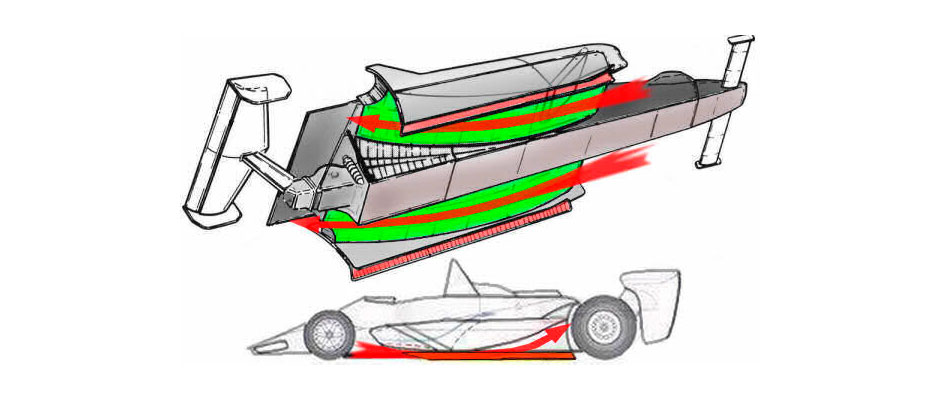
The term “Ground Effect” gets thrown around a lot among car enthusiasts but the actual principles involved are poorly understood. In an effort to explain how ground effects work, we will examine the term in respect to the physics involved.
Definition
The phrase “Ground Effect” has a specific meaning for a car designers. With some assist from the car enthusiasts at East Hills Jeep of East Hills of Greenvale, NY, we can tell you this: Ground Effects refers to a phenomena of aerodynamics where the flow of air around an aircraft or a car is influenced by the ground underneath. The concept is very important to both pilots and race car drivers.
Aircraft ground effects
Aircraft can get increased lift and therefore better efficiency by flying close to the ground. Unfortunately aircraft cannot fly close to the ground for obvious reasons. Helicopters, on the other hand, can benefit from ground effect by hovering near the ground. A helicopter that hovers near the ground is more efficient than when hovering higher up.
Ground effect in cars
In the 1970s, racecar designers placed “wings,” or inverted airfoils on their cars to allow the air rushing over the car to push the vehicle downward. This downward force increased traction and helped handling to some degree. However, this did not involve the physics of ground effect.
However, substantial further downforce is available by using the ground to be part of the car’s aerodynamic system. The basic idea is to create a volume of low pressure underneath the car, which sucks the car to the road. Racing car designers have achieved low pressure in two ways: first, by using a fan to suck air out of the cavity under the car; second, to design the underside of the car as an inverted wing so that large amounts of incoming air are accelerated through a narrow slot between the car and the ground, lowering pressure by Bernoulli’s principle.
In 1961, Jim Hall was the first car aerodynamicist to harness downforce. His Chapparrel racecars used dramatic high wings to generate downforce. This downforce provided superior traction and handling but it did not utilize the physics of ground force.
His Chapparal 2J “sucker car” of 1970 did, though. It had two fans at the rear of the car driven by a dedicated two-stroke engine; it also had “skirts”, which left only a minimal gap between car and ground, so as to seal the cavity from the atmosphere. Although it did not win any races, the competition realized its enormous potential and lobbied for its ban, which came into place at the end of that year.
Formula 1
Formula 1 in the late 1970s was the next setting for the use of ground effect in racing cars. In 1977, lotus premiered their “Wing Car”, the Lotus 78. Its sidepods, bulky constructions between front and rear wheels, were shaped as inverted aerofoils and sealed with flexible “skirts” to the ground. The team won 5 races that year, and 2 in 1978 while they developed the much improved Lotus 79.
The most notable contender in 1978 was the Brabham BT46B “fan car.” It’s suction fan, spinning on a horizontal, longitudinal axis at the back of the car, took its power from the main gearbox. It raced just once, with Niki Lauda winning at the Swedish Grand Prix.
Banning ground effects
The advantage of using ground effects is that they allowed racecars to generate huge amounts of downforce and thus corner at very high speeds. The problem is that if the seal is broken – for example, if the skirts are damaged, the car went over an uneven portion of the road, the car was nudged by another car, et cetera – then a large portion of that downforce would be almost instantly lost, potentially causing the car to hurtle off the track. If we are to use the suction cup analogy, think of how a suction cup pops off a wall pretty quickly once the seal is broken. This is why ground effect technology is banned by all major racing organizations.
